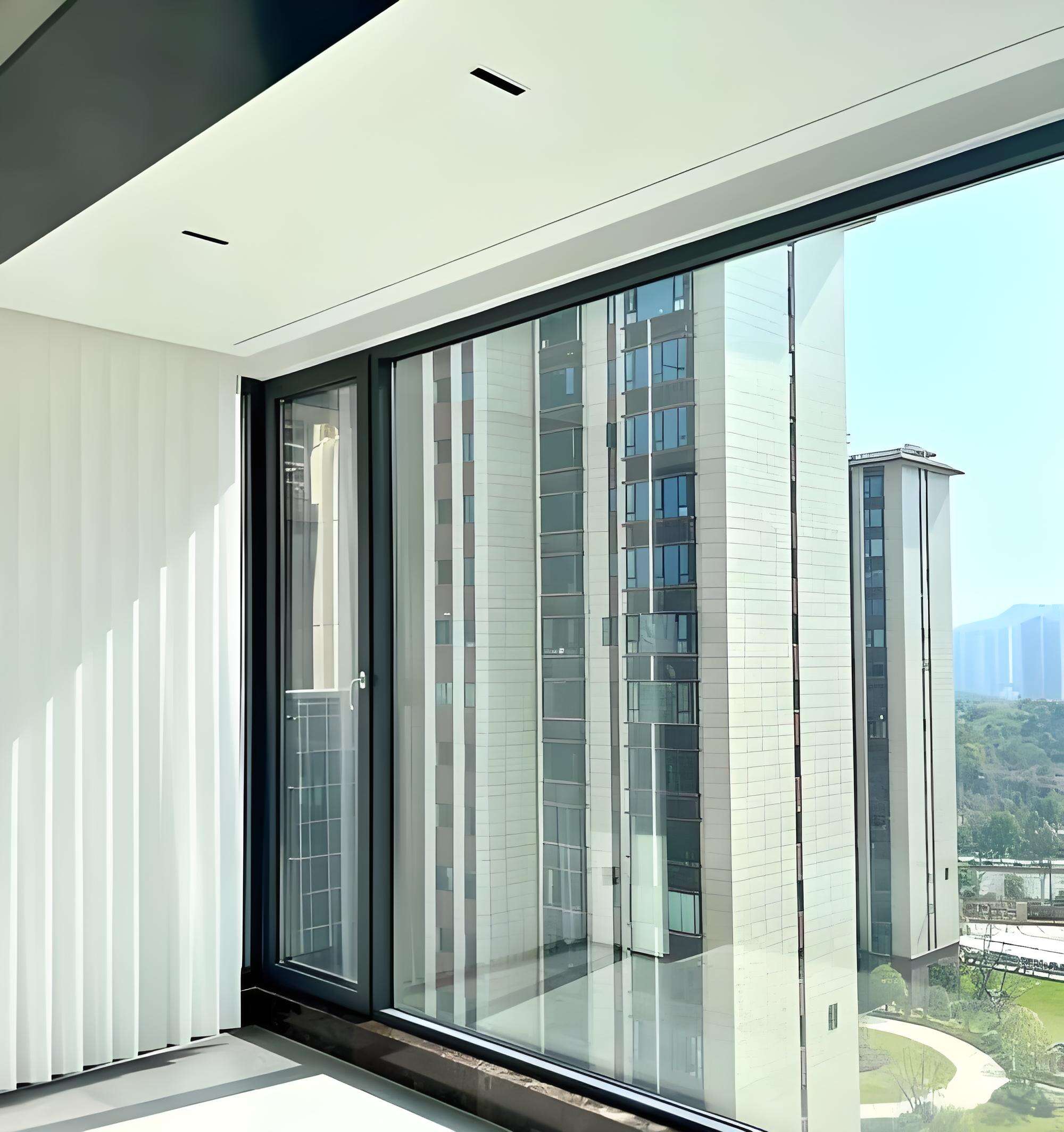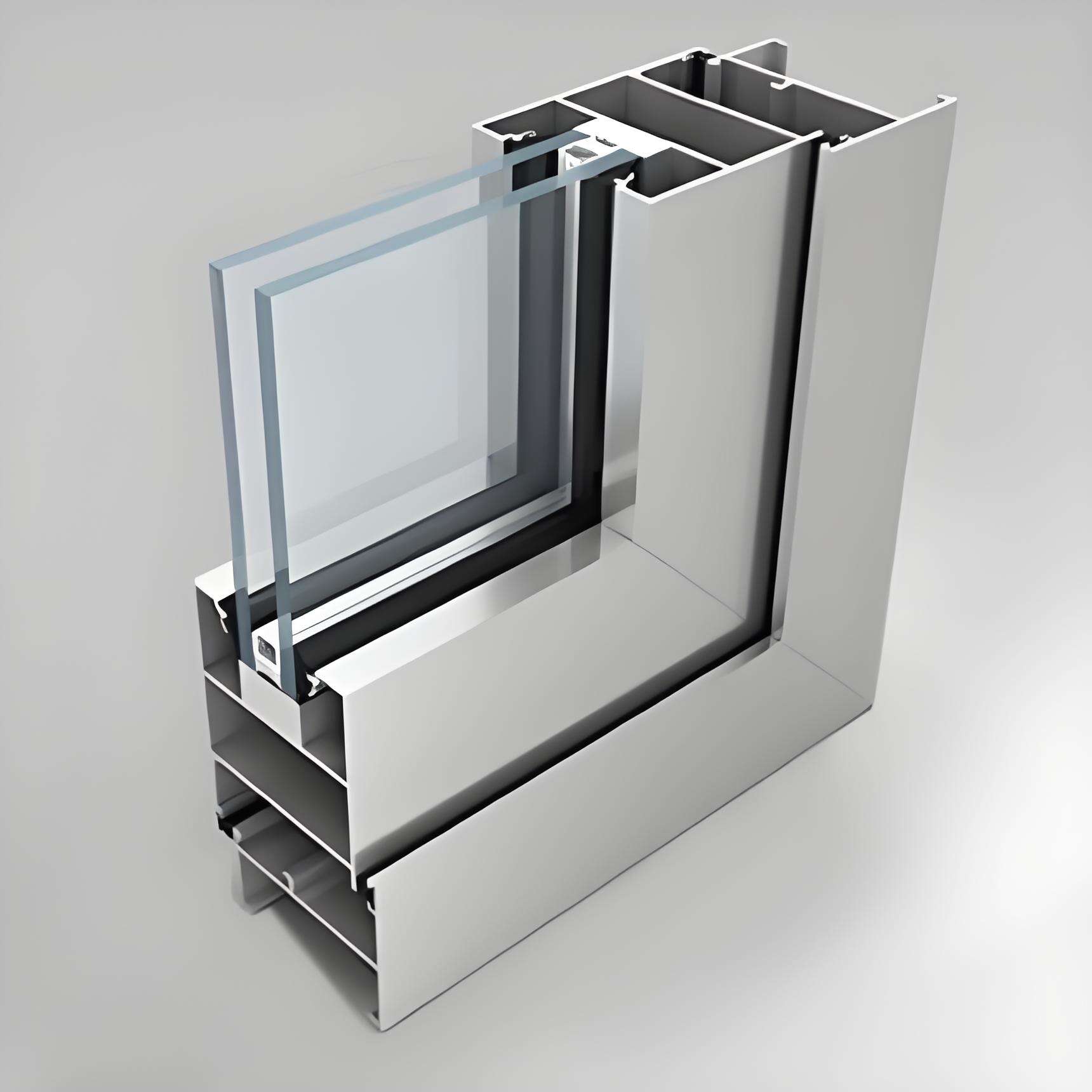শব্দ-ব্লকিং কাচের জানালার পিছনের বিজ্ঞান
শহুরে পরিবেশে আধুনিক জীবনযাপনের সঙ্গে আসে অসংখ্য চ্যালেঞ্জ, এবং শব্দ দূষণ তার মধ্যে অন্যতম ব্যাঘাতকারী। যানজটের শব্দ, নির্মাণকাজ, নগর জীবনের সাধারণ কোলাহল—অতিরিক্ত শব্দ আমাদের জীবনের মান, উৎপাদনশীলতা এবং সুস্থতার উপর গভীর প্রভাব ফেলতে পারে। সৌভাগ্যক্রমে, জানালার প্রযুক্তিতে এসেছে উন্নতি, যা শব্দ কমানোর জন্য উন্নত জানালা প্রবর্তন করেছে যা আপনার বাসস্থান বা কর্মক্ষেত্রকে একটি শান্তিপূর্ণ আশ্রয়ে পরিণত করতে পারে।
কাচের জানালা আজকের যুগে আলো ঢুকতে দেওয়া এবং প্রাকৃতিক উপাদানগুলি বাইরে রাখার মৌলিক কাজের বাইরে এগিয়ে গেছে। আজকের দিনের শব্দ হ্রাসকারী জানালাগুলি বিশেষ কাচের একাধিক স্তর, উদ্ভাবনী উপকরণ এবং অত্যাধুনিক প্রকৌশল ব্যবহার করে অবাঞ্ছিত শব্দের বিরুদ্ধে বাধা তৈরি করে। এই জানালাগুলি কীভাবে কাজ করে এবং এর সুবিধাগুলি বোঝা আপনাকে আপনার পরিবেশের ধ্বনিতত্ত্ব উন্নত করার সিদ্ধান্ত নিতে সাহায্য করতে পারে।
শব্দ নিয়ন্ত্রণের জন্য জানালার প্রযুক্তি বোঝা
কাচের পুরুত্বের ভূমিকা
শব্দ হ্রাসের ক্ষমতার ক্ষেত্রে কাচের পুরুত্ব একটি গুরুত্বপূর্ণ ভূমিকা পালন করে। পাতলা কাচের চেয়ে ঘন কাচ প্রাকৃতিকভাবে বেশি শব্দ ব্লক করে। তবে শুধুমাত্র সম্ভব সবচেয়ে ঘন কাচ ব্যবহার করার বিষয়টি নয়। আধুনিক শব্দ হ্রাসকারী জানালাগুলিতে প্রায়শই নির্মাণে বিভিন্ন পুরুত্বের কাচ ব্যবহার করা হয়, কারণ বিভিন্ন পুরুত্ব বিভিন্ন শব্দ ফ্রিকোয়েন্সিকে আরও কার্যকরভাবে বাধা দেয়।
ইঞ্জিনিয়ারদের আবিষ্কার হয়েছে যে অসমমিত কাচের গঠন – যেখানে বিভিন্ন পুরুত্বের প্যানগুলি একত্রিত করা হয় – একই পুরুত্বের চেয়ে শব্দ হ্রাসে ভালো কাজ করে। এর কারণ হল বিভিন্ন পুরুত্বের কাচ বিভিন্ন কম্পাঙ্কে অনুনাদিত হয়, যা জানালাকে শব্দের বৃহত্তর স্পেকট্রাম মোকাবেলা করতে দেয়।
উন্নত ল্যামিনেশন প্রযুক্তি
ল্যামিনেটেড কাচ শব্দ হ্রাসকারী জানালার প্রযুক্তিতে একটি গুরুত্বপূর্ণ অগ্রগতি চিহ্নিত করে। দুই বা ততোধিক কাচের প্যানের মাঝে একটি বিশেষ ধ্বনি-নিরোধক ইন্টারলেয়ার স্থাপন করে উৎপাদনকারীরা একটি শক্তিশালী শব্দ-নিঃশব্দকারী বাধা তৈরি করে। এই ইন্টারলেয়ারগুলি, যা প্রায়শই পলিভিনাইল বিউটাইরাল (PVB) বা এরূপ উপাদান দিয়ে তৈরি, শব্দের কম্পন শোষণ করে এবং জানালার গঠনের মধ্য দিয়ে তা প্রবাহিত হওয়া থেকে রোধ করে।
ল্যামিনেশন প্রক্রিয়া শব্দ হ্রাসকে শুধু উন্নত করেই না, বরং আরও অতিরিক্ত সুবিধা যেমন উন্নত নিরাপত্তা এবং আলট্রাভায়োলেট (UV) সুরক্ষা প্রদান করে। আধুনিক ধ্বনি-নিরোধক ইন্টারলেয়ার সাধারণ একক-প্যানের জানালার তুলনায় শব্দের মাত্রা প্রায় 50% পর্যন্ত হ্রাস করতে পারে।

মাল্টি-প্যান উইন্ডো সিস্টেম
ডবল-গ্লেজিংয়ের সুবিধা
শহরাঞ্চলে ডবল-গ্লেজড শব্দ হ্রাসকারী জানালা ক্রমাগত জনপ্রিয়তা পাচ্ছে। এই জানালাগুলিতে নিষ্ক্রিয় গ্যাস (সাধারণত আর্গন বা ক্রিপটন) দিয়ে পূর্ণ একটি ফাঁক দ্বারা পৃথক কাচের দুটি প্যান থাকে। গ্যাসপূর্ণ খাদটি শব্দ সংক্রমণের বিরুদ্ধে অতিরিক্ত বাধা তৈরি করে এবং তাপীয় নিরোধকতা উন্নত করে।
ডবল-গ্লেজিংয়ের কার্যকারিতা প্রধানত প্যানগুলির মধ্যে থাকা দূরত্বের উপর নির্ভর করে। নির্দিষ্ট শব্দ ফ্রিকোয়েন্সির উপর নির্ভর করে চূড়ান্ত দূরত্বের পরিবর্তন ঘটে, কিন্তু সাধারণত 12-16 মিমি এর মধ্যে থাকে। বিভিন্ন ধরনের শব্দের জন্য সর্বোচ্চ শব্দ হ্রাস নিশ্চিত করতে এই সতর্ক ক্যালিব্রেশন গুরুত্বপূর্ণ।
ট্রিপল-গ্লেজিং সমাধান
যেসব পরিবেশে সর্বোচ্চ শব্দ হ্রাসের প্রয়োজন, সেগুলিতে তিন-স্তরযুক্ত জানালা উত্কৃষ্ট কার্যকারিতা প্রদান করে। এই ব্যবস্থাগুলিতে দুটি গ্যাসপূর্ণ স্থানসহ কাচের তিনটি স্তর অন্তর্ভুক্ত থাকে, যা শব্দ সঞ্চালনের বিরুদ্ধে একাধিক বাধা তৈরি করে। দ্বি-স্তরযুক্ত বিকল্পগুলির তুলনায় এগুলি আরও ব্যয়বহুল হলেও, তিন-স্তরযুক্ত শব্দ হ্রাসকারী জানালাগুলি অসাধারণ শব্দ হ্রাসের মাত্রা অর্জন করতে পারে, যা বিমানবন্দর বা ব্যস্ত মহাসড়কের কাছাকাছি সম্পত্তির জন্য আদর্শ করে তোলে।
তিন-স্তরযুক্ত জানালাগুলিতে অতিরিক্ত স্তরটি তাপীয় দক্ষতা আরও বৃদ্ধি করে, যা শব্দ এবং তাপমাত্রা নিয়ন্ত্রণ উভয়ের জন্য একটি ব্যাপক সমাধান হিসাবে এগুলিকে প্রতিষ্ঠিত করে। তবে পরিকল্পনার সময় ইনস্টলেশনের বৃদ্ধিত ওজন এবং জটিলতা বিবেচনা করা উচিত।
ইনস্টলেশন এবং কার্যকারিতার বিষয়গুলি
পেশাদার ইনস্টলেশনের আবশ্যকতা
শব্দ কমানোর জন্য উইন্ডোগুলির কার্যকারিতা প্রধানত সঠিক ইনস্টলেশনের উপর নির্ভর করে। এমনকি সবচেয়ে উন্নত উইন্ডো সিস্টেমও যদি সঠিকভাবে ইনস্টল না করা হয়, তবে তা আশানুরূপ কাজ করতে ব্যর্থ হবে। পেশাদার ইনস্টলেশন সঠিক সীলিং নিশ্চিত করে, যা শব্দ কমানোর পাশাপাশি শক্তি দক্ষতার জন্য অত্যন্ত গুরুত্বপূর্ণ।
ইনস্টলারদের উইন্ডো ফ্রেম এবং চারপাশের দেয়ালের সংযোগস্থলে বিশেষ মনোযোগ দেওয়া উচিত, কারণ এই অঞ্চলগুলি শব্দ সঞ্চালনের দুর্বল বিন্দুতে পরিণত হতে পারে। উপযুক্ত ধ্বনি-নিবারক সীলক এবং ইনস্টলেশন কৌশল ব্যবহার করে উইন্ডোটির শব্দ হ্রাসকরণ ক্ষমতা বজায় রাখতে সাহায্য করে।
রক্ষণাবেক্ষণের বিবেচনা
যদিও শব্দ কমানোর উইন্ডোগুলি দীর্ঘস্থায়ী হওয়ার জন্য ডিজাইন করা হয়, তবু সঠিক রক্ষণাবেক্ষণ তাদের দীর্ঘমেয়াদী কর্মক্ষমতা নিশ্চিত করে। সীল, ফ্রেম এবং কাচের পৃষ্ঠগুলির নিয়মিত পরীক্ষা করে শব্দ বাধা দেওয়ার ক্ষমতা ক্ষতিগ্রস্ত হওয়ার আগেই সম্ভাব্য সমস্যাগুলি চিহ্নিত করতে সাহায্য করে। চলমান অংশগুলি পরিষ্কার করা এবং গ্রীষ প্রয়োগ করার মতো সাধারণ রক্ষণাবেক্ষণ কাজগুলি উইন্ডোটির আয়ু বাড়াতে এবং আদর্শ কর্মক্ষমতা বজায় রাখতে সাহায্য করে।
যেকোনো ক্ষতির বিষয়টি তাড়াতাড়ি সমাধান করা গুরুত্বপূর্ণ, কারণ ছোট ফাটল বা সীলের ব্যর্থতা এমনকি জানালার শব্দ হ্রাসের ক্ষমতাকে উল্লেখযোগ্যভাবে প্রভাবিত করতে পারে। মেরামতের জন্য যোগ্য পেশাদারদের সাথে কাজ করলে ধ্বনি-নিয়ন্ত্রণ ব্যবস্থার অখণ্ডতা বজায় রাখা নিশ্চিত হয়।
শব্দ হ্রাসে সাফল্যের মাপকাঠি
শব্দ সঞ্চালন শ্রেণী (STC) রেটিং
শব্দ হ্রাসের জানালার কার্যকারিতা শব্দ সঞ্চালন শ্রেণী (STC) রেটিং ব্যবহার করে পরিমাপ করা হয়। উচ্চতর STC রেটিং ভালো শব্দ-বাধা ক্ষমতার নির্দেশ দেয়। স্ট্যান্ডার্ড একক-প্যানেল জানালাগুলির STC রেটিং সাধারণত 27-এর কাছাকাছি হয়, যেখানে উন্নত শব্দ হ্রাসের জানালা 45 বা তার বেশি রেটিং অর্জন করতে পারে।
নির্দিষ্ট শব্দ হ্রাসের প্রয়োজনীয়তা অনুযায়ী জানালা নির্বাচনে STC রেটিং বোঝা গুরুত্বপূর্ণ। মধ্যম শব্দের শহরি পরিবেশের জন্য 35-40 এর মধ্যে STC রেটিংযুক্ত জানালা যথেষ্ট হতে পারে। তবে, প্রধান শব্দের উৎসের কাছাকাছি অবস্থানগুলির জন্য উচ্চতর রেটিংযুক্ত জানালার প্রয়োজন হতে পারে।
বাস্তব পরিস্থিতিতে কর্মক্ষমতার মাপকাঠি
পরীক্ষাগারের রেটিংয়ের ঊর্ধ্বে, বাস্তব পরিস্থিতিতে কার্যকারিতা নির্ভর করে বিভিন্ন কারণের উপর, যেমন ইনস্টলেশনের মান, ভবন নির্মাণ এবং নির্দিষ্ট শব্দের উৎস। পেশাদার ধ্বনিতত্ত্ব মূল্যায়ন নির্দিষ্ট পরিস্থিতির জন্য সবচেয়ে কার্যকর জানালা সমাধানগুলি নির্ধারণ করতে সহায়তা করতে পারে।
অনেক উৎপাদক এখন গ্রাহকদের তাদের শব্দ হ্রাসকারী জানালাগুলির ব্যবহারিক সুবিধাগুলি বোঝার জন্য সাইটে পরীক্ষা এবং ডেমোনস্ট্রেশন অফার করে। এই বাস্তব-জীবনের মূল্যায়নগুলি প্রত্যাশিত কর্মক্ষমতার স্তর সম্পর্কে মূল্যবান ধারণা প্রদান করে।
প্রায়শই জিজ্ঞাসিত প্রশ্নাবলী
ধ্বনিবর্জন জানালা আসলে কতটা শব্দ কমাতে পারে?
উচ্চ-মানের শব্দ হ্রাসকারী জানালা সাধারণত নির্দিষ্ট জানালার ডিজাইন এবং ইনস্টলেশনের উপর নির্ভর করে বাহ্যিক শব্দের স্তর 25-40 ডেসিবেল পর্যন্ত কমাতে পারে। এটি স্ট্যান্ডার্ড জানালার তুলনায় পর্যবেক্ষিত শব্দের হ্রাস প্রায় 80% পর্যন্ত হতে পারে।
শব্দ হ্রাসকারী জানালা বিনিয়োগের জন্য এটি যথেষ্ট মূল্যবান কিনা?
শব্দ বাধা দেওয়ার চেয়ে কয়েক ধাপ এগিয়ে নয়েজ রিডাকশন জানালার মূল্য। এই জানালাগুলি প্রায়শই উন্নত তাপীয় নিরোধকতা, শক্তিশালী নিরাপত্তা এবং সম্পত্তির মূল্য বৃদ্ধির সম্ভাবনা প্রদান করে। শব্দের হার বেশি এমন এলাকার সম্পত্তির ক্ষেত্রে, জীবনের গুণগত মানে আনা উন্নতি সাধারণত বিনিয়োগের যথার্থতা প্রমাণ করে।
অ্যাকোস্টিক জানালা সাধারণত কতদিন স্থায়ী হয়?
যথাযথ রক্ষণাবেক্ষণের সঙ্গে, নয়েজ রিডাকশন জানালা 20-30 বছর ধরে তাদের কার্যকারিতা বজায় রাখতে পারে। প্রকৃত আয়ু নির্ভর করে ইনস্টলেশনের মান, পরিবেশগত অবস্থা এবং রক্ষণাবেক্ষণের অনুশীলনের উপর। নিয়মিত পেশাদার পরীক্ষা-নিরীক্ষা আয়ু বাড়াতে সহায়তা করতে পারে।


